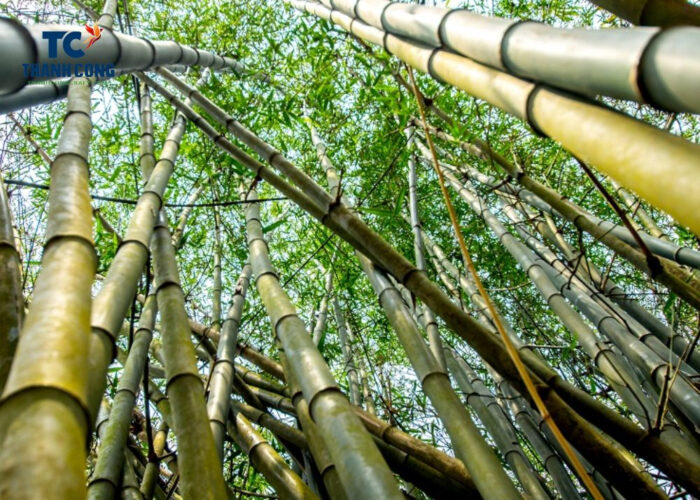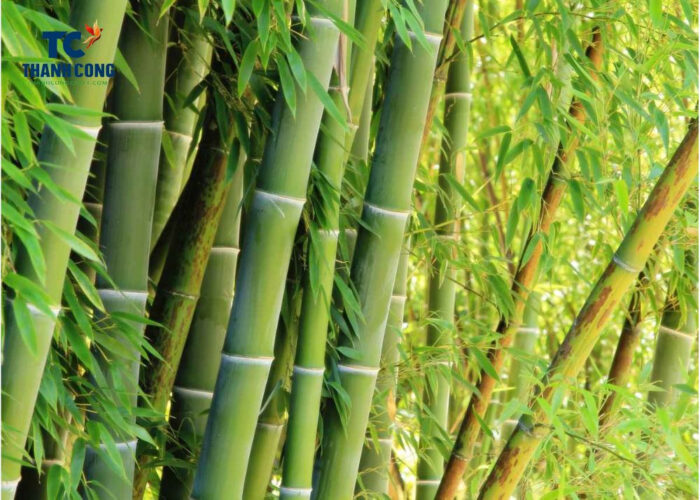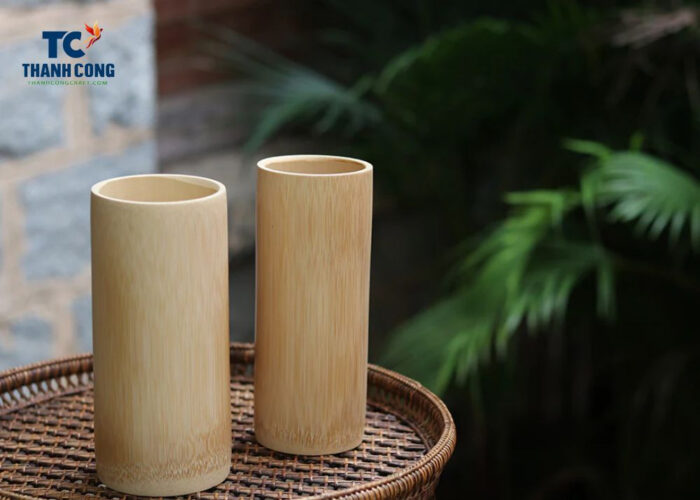Bamboo a remarkably versatile and eco-friendly plant, has gained widespread attention for its diverse applications and sustainable qualities. One might wonder, where can bamboo grow?, this question leads us to explore the remarkable adaptability of bamboo to various environmental conditions across the globe.
1. Introduction to Bamboo
Bamboo is a woody plant species recognized for its distinctive clustered roots and hollow stems. It belongs to the Poaceae family, a group of grasses. The stem of the bamboo plant stands tall and erect, sporting a vibrant green color. The leaves, elongated and modest in size, retain their verdant hue throughout the year. The stem’s architecture is particularly remarkable, comprised of numerous nodes that create its segmented appearance. From these nodes, small shoots can emerge, potentially growing into branches or leaves. The leaves tend to cluster predominantly at the upper part of the stem, gently arching due to the flexible and relatively small tip of the bamboo.

Bamboo is renowned for its swift growth and development. Within a span of 2 to 4 years, a fully mature bamboo plant can be ready for harvesting. Flowering in bamboo is a rarity, generally taking place only after 60 to 100 years. Bamboo’s primary mode of reproduction is through its root system, rather than relying on flowers or seeds. Shoots, referred to as bamboo shoots or “măng” in Vietnamese, sprout from the root. Bamboo shoots and stems often thrive in close proximity. Bamboo is adaptable to diverse climates and soil conditions, flourishing in a variety of environments. To date, more than 1000 bamboo species have been identified worldwide.
2. Where can bamboo grow
Bamboo flourishes naturally on five continents such as: Africa, Asia, South America, North America, and Australia. In essence, this resilient plant calls every continent home, save for Antarctica and Europe. Interestingly, this distribution mirrors the presence of diamonds, which are also found across all continents except Antarctica and Europe.
The tropical and subtropical regions of Asia, Africa, and Latin America serve as bamboo’s primary habitats. It extends its reach as far north as the southern United States and central China, and as far south as Patagonia. Additionally, the northern landscapes of Australia are graced with bamboo’s presence.

In its natural setting, bamboo often thrives as secondary vegetation within forests. Remarkably, some bamboos assume a dominant role, as seen in the vast expanses they cover in northeast India and the mountainsides of eastern Africa.
Bamboo’s remarkable adaptability allows it to flourish even under extreme conditions. Certain species defy convention by thriving at altitudes ranging from sea level to a staggering 4000 meters in the Andes and Himalayas, enduring temperatures plummeting well below -20°C. This ability to withstand such hardships further cements bamboo’s status as a resilient botanical wonder.
3. Some Products Made From Bamboo
Bamboo is a highly versatile resource that can be used to create a wide range of products. Here are some common products made from bamboo:
- Bamboo Cups Wholesale: Bamboo cups, crafted from bamboo fibers, are an eco-friendly alternative to conventional disposable cups. These cups are not only biodegradable but also lightweight and durable. They offer a stylish and sustainable option for enjoying beverages, be it at home, in offices, or on-the-go.

- Bamboo Cutlery and Utensils: Bamboo’s strength and resistance to heat make it an ideal material for crafting cutlery and utensils. Bamboo forks, spoons, and knives are not only functional but also sustainable choices, reducing the need for single-use plastics.
- Bamboo Flooring and Furniture: Bamboo’s versatility extends to interior design. Bamboo flooring offers a durable and aesthetically pleasing option for homes and offices. Similarly, bamboo furniture pieces bring a touch of nature indoors, adding warmth and sophistication to living spaces.
- Wholesale Bamboo Baskets: Bamboo baskets, with their intricate weaves and natural aesthetic, serve a multitude of purposes. They are used for storing and organizing items, carrying groceries, and even as decorative elements in homes. The sturdiness of bamboo makes these baskets reliable companions for daily tasks.

- Bamboo Clothing and Textiles: Bamboo fibers are used to create soft and breathable textiles. Bamboo clothing, such as shirts, dresses, and activewear, offer comfort and eco-friendliness to fashion enthusiasts. Bamboo bed linens and towels also provide a luxurious and sustainable option for enhancing daily routines.
- Bamboo Construction and Craftsmanship: Bamboo’s strength-to-weight ratio makes it a viable material for construction. It is used for building structures, bridges, and even scaffolding. Additionally, bamboo’s pliability lends itself to intricate craftsmanship, resulting in products like bamboo blinds, mats, and even musical instruments.
- Culinary Delights from Bamboo: Bamboo shoots, an essential ingredient in many Asian cuisines, are enjoyed in various dishes. From stir-fries to soups, these tender shoots add a unique flavor and texture to meals.
If you have any further questions, please don’t hesitate to contact Thanh Cong Craft email at info@thanhcongcraft.com or message us at WhatsApp: +84967485411. Hope to serve you soon! Best regard!


